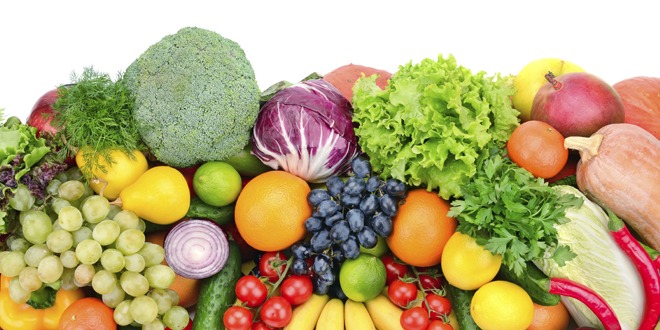Not all fruits and vegetables contain the same levels of sugar or fibre, both of which affect the carb count. When fibre is eaten, sugars are released more slowly into the bloodstream and over a longer period. This helps to maintain blood glucose level targets.
Diabetes dietitians separate vegetables into two groups: non-starchy and starchy vegetables.
Non-starchy Vegetables. Most vegetables are non-starchy. These contain very little carbohydrate and are good sources of fibre, so they have a very limited impact on blood glucose levels. For example, a portion of non-starchy vegetables contains less than 5 grams of carbohydrate.
All vegetables also contain many vitamins and minerals, in addition to fibre, so they have a positive effect on our health. Choose dark green and brightly coloured vegetables as often as possible.
Starchy Vegetables. Starchy vegetables also contain lots of nutrients but are slightly higher in carbohydrate than non-starchy vegetables. This means they have some effect on blood glucose levels. Starchy vegetables include potatoes, parsnips, peas, squash, beans and corn.
Fruits. All fruits contain natural sugars, which will have some impact on blood glucose levels. However, fruits also contain abundant nutrients so they should be included in moderation in a diabetes meal plan. Just be sure to watch the portion size. For example, the Canadian Diabetes Association measures one medium apple, orange or pear as having the same amount of sugar as half a mango or one small banana.
Choose fresh fruits in preference to canned fruit, where possible. If canned fruit is the only option, choose fruit packed in fruit juice instead of fruit packed in syrup.
Eat Fruit and Vegetable Skins. The fibre count of a fruit or vegetable reduces the carb count. Since peels contain fibre, you can reduce the carb count by carefully washing fruits and vegetables, and eating them with the peel on.
Good fruits to choose include raw apricots, apples, pears, and berries. Higher carb fruits include grapes and citrus fruits.
With both fruit and vegetables, fresh and raw is best, but baked and steamed are good cooking methods that help to retain important nutrients. Wherever possible, avoid frying foods. Generally speaking, 1 cup fresh = ½ cup cooked.
Easy Ways to Increase Fruit and Veggie Intake. Buy veggies and fruits pre-washed and pre-cut. Make up a crudité plate of raw vegetables with a healthy dip for snacking. Make batches of vegetable soups and store in the freezer for fast and easy lunches, when accompanied by a protein.
Look to fruits as the basis for delicious desserts. You can buy sugar-free whipped toppings, or try a sauce like pureed raspberries over a perfectly ripe peach or a poached pear. Fat-free angel food cake is also a delicious option, served with seasonal or frozen berries.
 Diabetes Care Community Learn, connect and care
Diabetes Care Community Learn, connect and care



